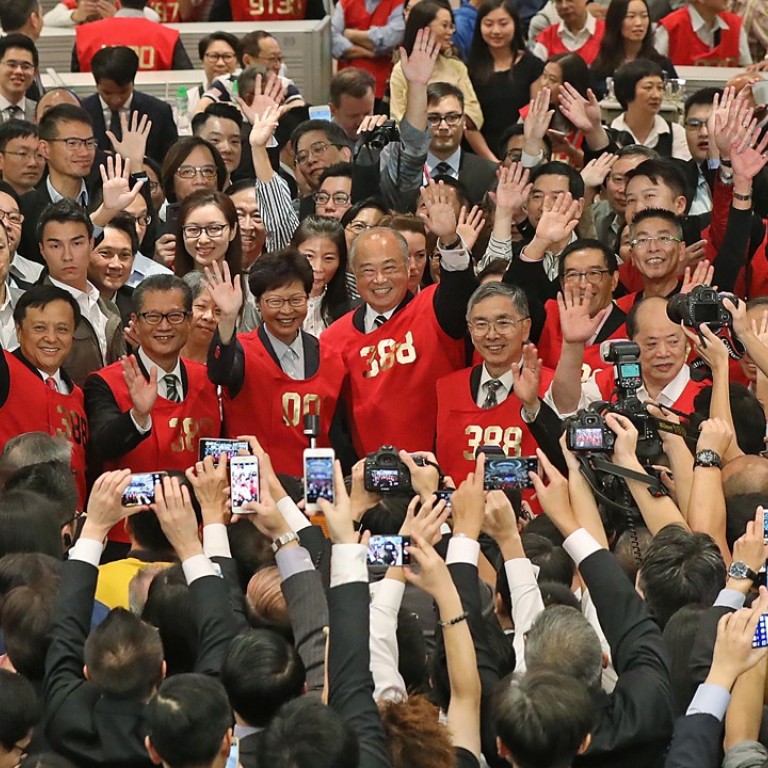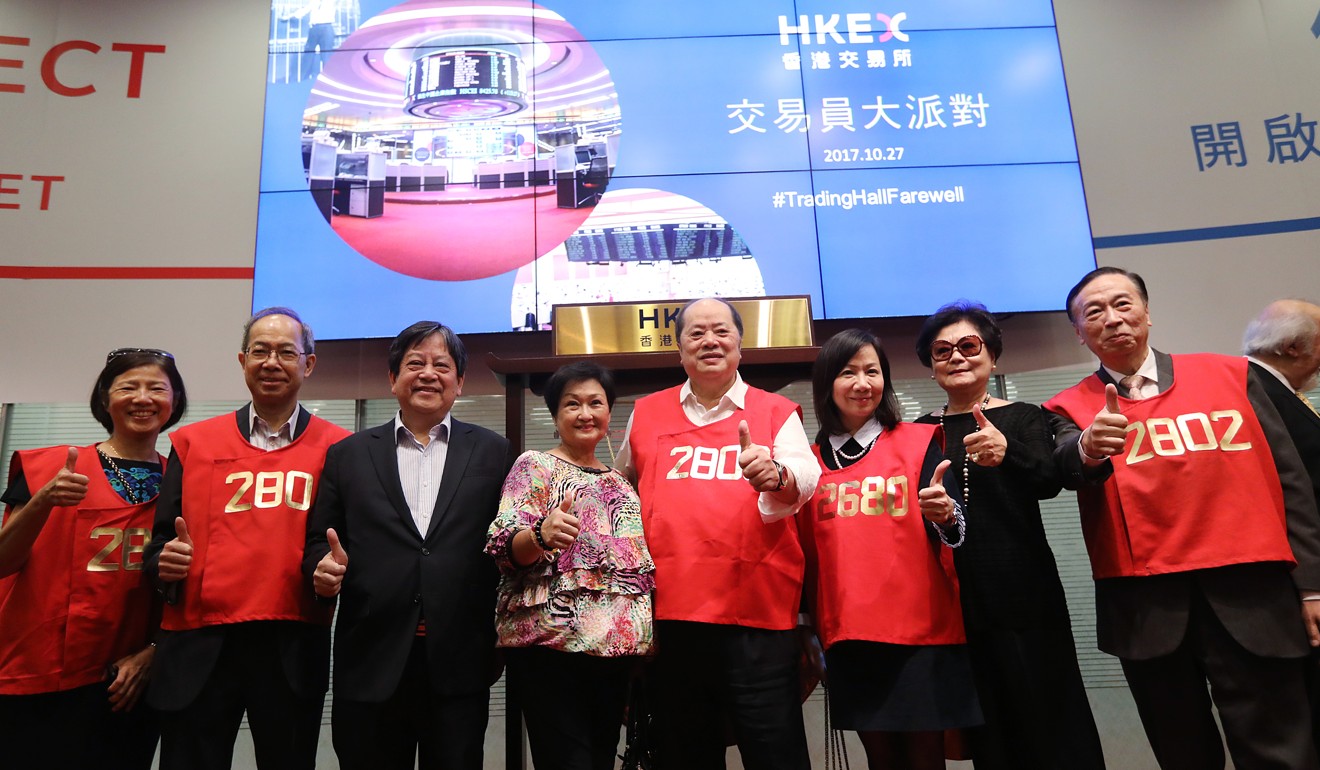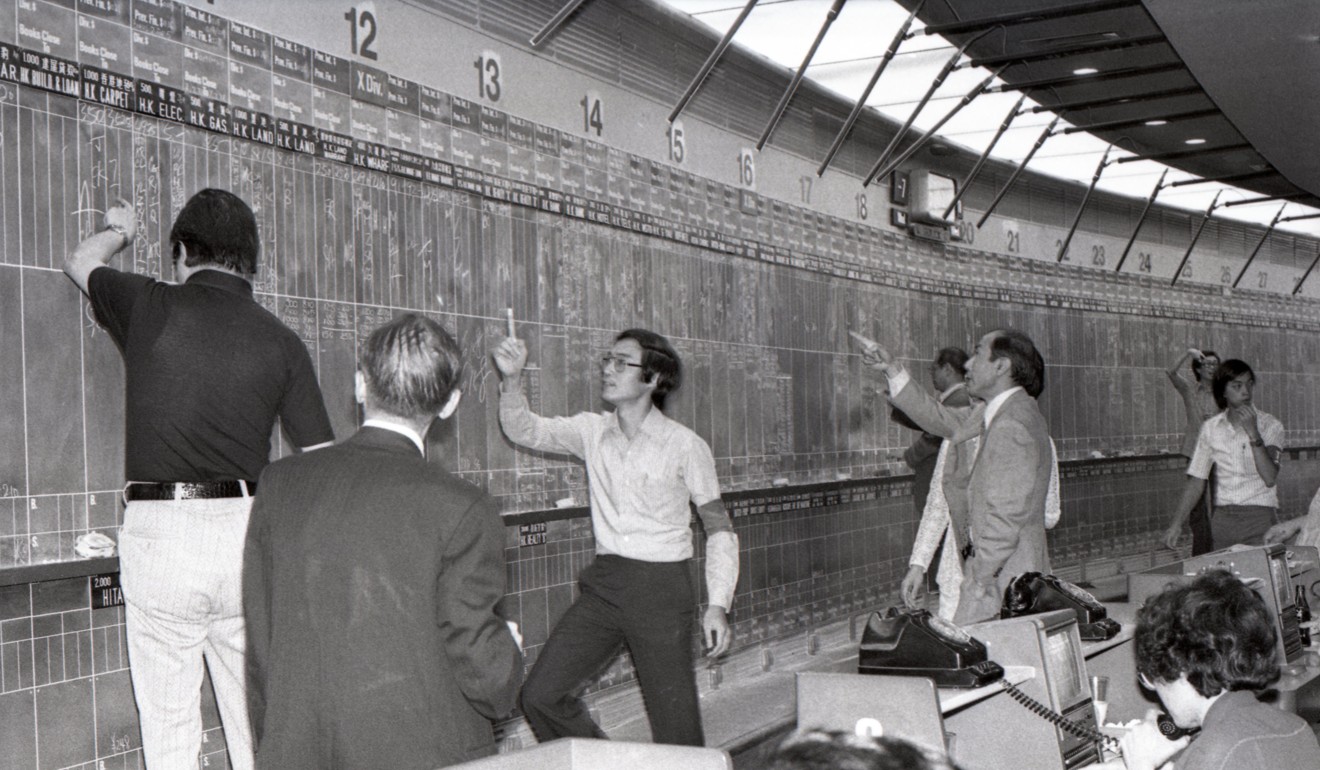
Selfies and ceremony as the Hong Kong stock exchange’s floor trading hall closes for good
About 1,400 traders join the city’s Chief Executive Carrie Lam to bid farewell to the hall and to mark the end of 126 years of floor trading history
Stock traders past and present, many wearing the traditional red jacket, joined government leaders at the trading hall of the Hong Kong stock exchange on Friday for its official closing ceremony, bringing down the curtain on 126 years of floor trading in the city.
Once the centre of stock trading in the city, the floor fell victim to the rise of electronic trading in the 1990s and the brokers gradually moved out, prompting the bourse operator, Hong Kong Exchanges and Clearing (HKEX), to close it.
The current building, located at Exchange Square in Central, began operations in 1986 following the merger of the city’s four different stock exchanges. It will now become a museum, conference and exhibition space to promote Hong Kong’s financial markets and will be renamed Hong Kong Connect Hall, reopening in February 2018.
Its closure leaves only New York among major world stock exchanges to have a trading floor.
“When the trading hall first opened on April 2, 1986, the Hang Seng Index traded at 1,603, and it closed at 28,438 today. Turnover on its first trading day was HK$226 million and today it was about HK$100 billion,” said HKEX chairman Chow Chung-kong, in remarks at the ceremony.
“This shows the Hong Kong stock market has come a long way. There have been a lot of ups and downs, good and bad days in between, but traders have kept the market going over the three decades,” he said.

Hong Kong’s chief executive, Carrie Lam Cheng Yuet-ngor, received a red jacket – the required wear for floor traders when the hall was in use – bearing the number 001 and posed for photographs with traders and reporters. Chow sported a jacket with the number 388, the stock code for HKEX, which is listed on the exchange it runs.
For many younger traders, the ceremony was the first time they had been to the hall, and the red jackets were much in demand for selfies and group photos. HKEX also provided snacks popular in the 1970s and 1980s to add to the sense of nostalgia for those attending the ceremony.
Floor trading began in Hong Kong in 1891. The current hall has 906 two-person booths and housed over 1,400 traders at its peak in the 1980s, when all transactions were conducted by floor traders. But recently only about 30 remained.

Former traders recalled the buzz and camaraderie of days on the floor.
“Each floor trader had up to four telephones and my firm had 10 traders so we had 40 telephones in front of us,” said Benny Mau, who started his career as a floor trader at BOCI International in 1987.
“Back then, all 40 phones could ring at the same time and we had to yell to other traders to get the deals done. You can imagine the atmosphere. All traders needed to have a loud voice, to be able to run fast, to have a clear memory and a good relationship with other traders to get the deals done,” Mau said.
Mau, like many traders, has not been on the floor for many years. He has become managing director of China Securities International Finance Holding, and like most of the broking community, stays in the office.


